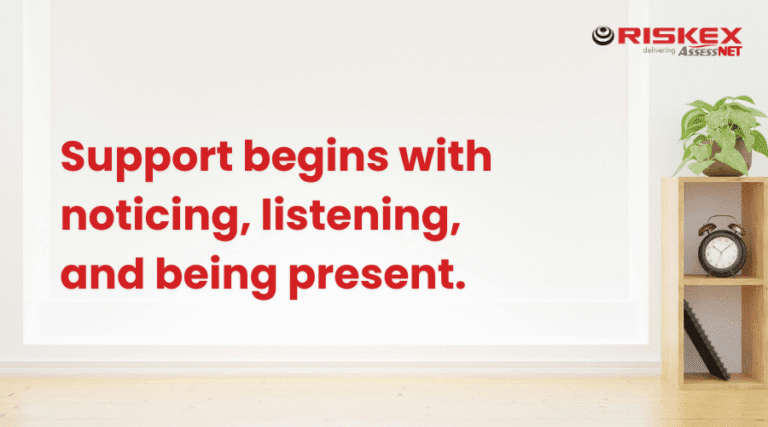Apprentices and young workers face specific workplace health and safety risks due to their limited experience, lack of training, and physical and emotional development. It is crucial to identify these risks and take appropriate measures to manage them effectively. Here are some common health and safety risks to consider within your young person risk assessment.
There are 3 sections within this article:
- Guidance for undertaking young person risk assessments
- Q&A from our apprentices
- Examples of hazards, risks and controls when undertaking your young person risk assessments
Guidance for undertaking young person risk assessments
Creating a Young Person Risk Assessment is essential to ensure the safety of individuals under 18 in the workplace, as required by the Management of Health and Safety at Work Regulations 1999. When undertaking this assessment, several key factors must be considered.
Physical and psychological development of the young person
Firstly, when assessing risks, take into account the young person’s age, physical and psychological development, and any limitations they may have in recognising workplace hazards. Tasks should be appropriate for their experience level, avoiding activities that could expose them to excessive physical strain, harmful substances, or high-risk machinery. The working environment must be examined for potential dangers, such as noise, chemicals, or biological risks, while ensuring that adequate safety measures are in place.
Supervision and training
Supervision and training are critical. Young people require clear instructions, close guidance, and a thorough induction to help them understand their responsibilities and safety protocols. It’s vital to create an environment where they feel comfortable asking questions or reporting concerns. Any prohibited tasks or restricted activities must be explicitly outlined.
Communicating with parents or guardians
Involving parents or guardians is advisable, especially if the individual is under 16, to ensure they are informed about the workplace and the measures in place to protect their child. Additionally, emergency procedures should be well communicated to the young person, ensuring they understand evacuation plans, first aid processes, and other safety protocols.
Review and update your young person risk assessment
Finally, document all findings and control measures, and regularly review and update the risk assessment to account for changes in tasks, environment, or the young person’s needs. This ensures that the assessment remains relevant and effective, safeguarding both the young person and the workplace.
So let’s recap the takeaways when undertaking a young person risk assessment
- Physical and psychological development of the young person – Take into account the person’s age, physical and psychological development and ensure tasks that are assigned are appropriate.
- Supervision and training – Ensure you are clearly outlining their responsibilities and safety protocols they need to adhere to.
- Communicating with parents or guardians – Involve parents and guardians especially a person who is under 16.
- Review and update your young person risk assessment – Document your findings and control measures and ensure assessments are updated regularly so they remain a relevant and effective way of safeguarding.
Q&A from our Riskex Apprentices – National Apprenticeship Week
Tom
Hi, I am Tom, I am an apprentice Software Engineer at Riskex. I am about 5 months into my apprenticeship and expect to finish it in 10 months time. Upon completion, I will have a Level 4 qualification and will work full time on software development at Riskex.
Robert
My name is Robert, and I am a software Support technician at Riskex. I started my career at Riskex as an apprentice and I have now completed my apprenticeship. I am now progressing in my career to become an experienced software developer.
What inspired you to choose a software engineering apprenticeship over a traditional university degree?
Tom – My older brother is the main reason. I watched him on a very similar path to the one I am on now, and I saw how his dedication and hard work paid off massively under an apprenticeship. Such that I decided to go for an apprenticeship over university, as I saw it as a more difficult but more rewarding path.
Can you share a moment when you felt particularly proud of your work during your apprenticeship?
Robert – During my time as an apprentice I felt a sense of accomplishment when I was able to take what I had learnt in my lesson and apply the knowledge to help a client resolve their query. It was rewarding to take what I had learnt and apply it to a real-life situation.
What skills have you gained so far in your apprenticeship that you feel will be most beneficial to your career in the future?
Tom – My communication skills have definitely improved the most. The combination of the work environment and collaboration on projects has taught me so much about communicating to different categories/levels of expertise, and how I can effectively present data in the best format for each.
Can you describe a project or task you worked on that challenged you and helped you grow as a software engineer?
Robert – During my apprenticeship I had to learn how to use SQL, which is used to manipulate databases. I started to write simple queries at first and progressed to write more challenging and complex queries, which has helped me progress as a software engineer.
Examples of hazards, risks, and controls when undertaking a young person risk assessment within a workplace
These examples illustrate common hazards and practical controls to ensure the safety of young people in the workplace. The assessment must always consider the specific tasks and environment involved.
Hazard example 1
Hazard: Operating machinery (e.g., a bench drill)
Risk: The young person could be injured by moving parts, such as trapping fingers or clothing.
Control Measures:
- Restrict access to machinery unless the young person is fully trained and competent.
- Provide supervision by a qualified and experienced staff member.
- Ensure the machinery is equipped with appropriate guards and emergency stop buttons.
- Require the young person to wear suitable personal protective equipment (PPE), such as safety goggles.
Hazard example 2
Hazard: Exposure to hazardous substances (e.g., cleaning chemicals)
Risk: The young person may suffer skin irritation, respiratory issues, or other health effects from exposure.
Control Measures:
- Avoid assigning tasks involving hazardous substances to where possible.
- Ensure proper labelling of chemicals and store them securely in designated areas.
- Provide clear instructions and training on safe handling procedures.
- Supply appropriate PPE, such as gloves and masks, if exposure cannot be avoided.
Hazard example 3
Hazard: Manual handling (e.g., lifting heavy boxes)
Risk: The young person could suffer musculoskeletal injuries due to improper lifting techniques or excessive load.
Control Measures:
- Train the young person in safe manual handling techniques.
- Limit the weight of items they are permitted to lift.
- Provide mechanical aids, such as trolleys or lifting equipment, to reduce physical strain.
- Monitor tasks to ensure they adhere to safe practices.
Hazard example 4
Hazard: Slips, trips, and falls (e.g., in a warehouse or workshop)
Risk: The young person may sustain injuries from slipping on wet floors or tripping over obstacles.
Control Measures:
- Ensure walkways are clear of obstructions and properly maintained.
- Use non-slip mats and immediately clean up any spills.
- Highlight potential hazards with appropriate signage.
- Conduct regular inspections of the area to maintain a safe working environment.
Risk Assessment Software – AssessNET
Ensure your young workers know the workplace risks pertinent to your business, and the control measures in place to keep them safe with our risk assessment software






